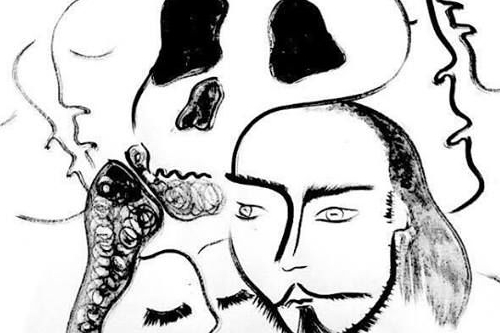 Intimate, thought-provoking biography of Shakespeare performs in east-end Toronto
Intimate, thought-provoking biography of Shakespeare performs in east-end Toronto
After 400-odd years, we have a new Shakespearean play, thanks to Now I Am Dead Productions‘ innovative approach to The Bard’s work. Based on his writings and the (albeit limited) records of his life, this Toronto-based company present a new tragicomedy about the man behind many plays we now call classic.
The Most Humourous and Tragic Tale of William Shakespeare’s Shakespeare is a pseudohistorical drama that strips away the legacy and accolades of the playwright and looks at his life through lenses such as friend, lover, husband and father. In particular, the story is based on his creative process in staging Taming of the Shrew, his courtship of Anne Hathaway, and the deaths of loved ones such as his son Hamnet and his friendly rival Christopher Marlowe.
Courtney Keir is a delight as Hathaway, enlivening her with a fierce spirit, a wit to match her husband’s, and a layered sense of sorrow and triumph. Another favourite of mine from the cast was the subtle scene-stealer Nick Afanasyev, credited simply and ominously as The Gentleman. During the pre-show, he mingled with the audience, engaging in improvised conversation about our opinions on Shakespeare and his work. Charming and enigmatic, he drew the eye even when in the background of scenes.
The conversations we had with him made us consider the play’s thesis: what does Shakespeare mean to you? Isaac Alfred Lloyd, who plays the titular role, is lucky in that he doesn’t have to pick just one Shakespearean hero to play- he is all of them with Hamlet’s angst, Romeo’s love, and more.
Liam Grunté pens a script after Shakespeare’s own style, laden with structured poetic verse, evocative imagery, and explosive wordplay. Much of the dialogue includes lines his own plays, with his everyday life, his opinions, and the nature of his relationships inferred from how his characters were written. At the climax of the first act is a hilarious take on Romeo and Juliet’s balcony scene where William hides in the bushes trying to help reconcile an estranged couple.
The writing style does suffer from the same trappings and drawbacks as traditional Shakespeare, though, such as being excessively ponderous and dry in places. It’s an obstacle that even veterans of the man’s work grapple with, and a whole new play means we have to take the extra time to process the language we’re hearing. A lot of well-structured jokes in this show don’t get the laughs they deserve because the audience is having a “translation delay” of sorts.
The show’s music, under the direction of composer Evan Sokolowski, is jaunty and refreshing, but I wanted more of it. The pre-show gave us cheeky jazz piano covers of pop music favourites from Barenaked Ladies to Elton John, which strangely complimented the tone of the production, but the intermission music switched to an arranged playlist from the speakers.
Similarly, the audio-visual elements of the show were an odd blend of digital and live foley. It assisted in keeping stage design minimal while still illustrative, but some of the sounds effects, like knocking on doors, were digital when they could be live to better effect.
Purists may have difficulty with this piece as it’s not exactly historically accurate. But as far as this company is concerned, purism is a poison that could kill the Bard for good, and this play invites us to re-evaluate what we know or believe. This ensemble do not talk down to their audiences, but playing to a crowd that is like-minded and passionate about the subject matter gives them greater artistic liberty. And fortunately for us, they use their creative freedom to indulge us with moments like a group sword fight against a legion of ghosts. All the best Shakespeare plays involve the supernatural, after all.
In as much as William Shakespeare’s Shakespeare can fall victim to the same trappings of the man who inspired it, I believe in judging the play kindly.
Details:
- The Most Humourous and Tragic Tale of William Shakespeare’s Shakespeare is at The Redwood Theatre (1300 Gerrard St E) until April 6, 2019
- Doors open at 7:30 pm with 8:00 pm curtain
- Tickets are $10-20 and can be purchased at the door or online
Graphic Design by Sana Shahmuradova
